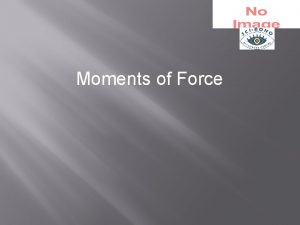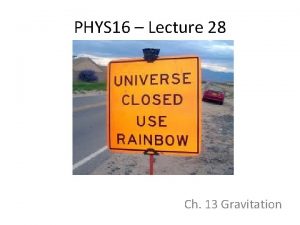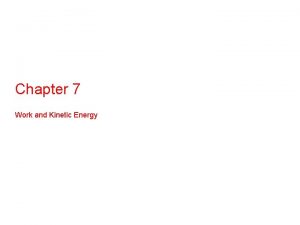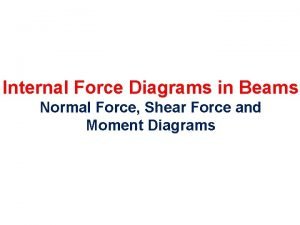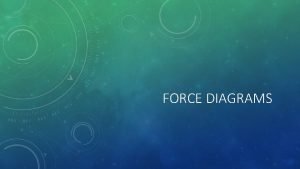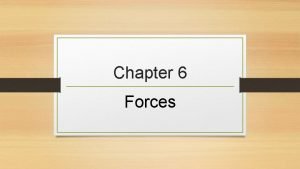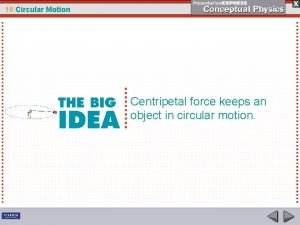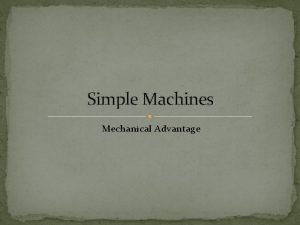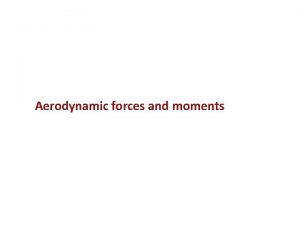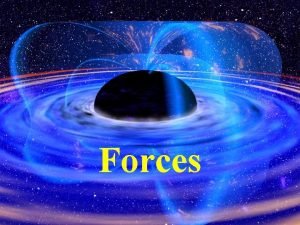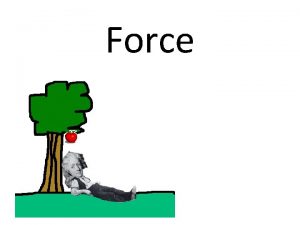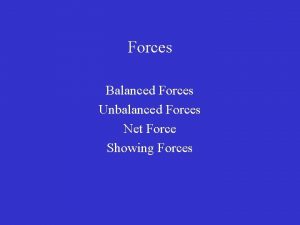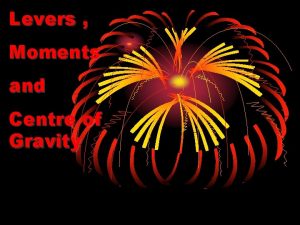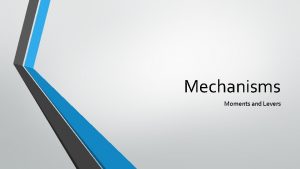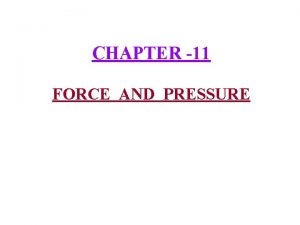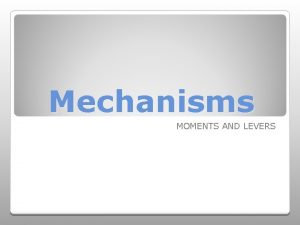Chapter 1 Forces and moments Forces A force

















- Slides: 17

Chapter 1 Forces and moments

Forces : A force can be defined as any push or pull exerted on a body. The unit of force is the Newton One Newton is the force required to produce in a mass of one Kilogram an acceleration of one meter per second. When considering a force the following must be known: • The magnitude of the force • The direction in which the force is applied • The point at which this force is applied

The resultant force When two or more forces are acting on a body, their combined effect can be represented by one force which will have the same effect as the component forces. Such a force is referred to as the ‘resultant force’. The process of finding it is called the ‘resolution of the component forces’.

(a) Resolving two forces which act in the same straight line If both forces act in the same straight line and in the same direction the resultant is their sum, but if the forces act in opposite directions the resultant is the difference of the two forces and acts in the direction of the larger of the two forces.

(a) Resolving two forces which act in the same straight line

(a) Resolving two forces which act in the same straight line

(b) Resolving two forces which do not act in the same straight line When the two forces do not act in the same straight line, their resultant can be found by completing a parallelogram of forces.

(c) Resolving two forces which act in parallel directions When two forces act in parallel directions, their combined effect can be represented by one force whose magnitude is equal to the algebraic sum of the two component forces, and which will act through a point about which their moments are equal.

Example 1 The parallel forces W and P are acting upwards through A and B respectively. Let W be greater than P. Their resultant (W + P) acts upwards through the point C such that P x y =W x X. Since W is greater than P, the point C will be nearer to B than to A.

Example 1 The parallel forces W and P are acting in opposite directions through A and B respectively. Let W be greater than P. Their resultant (W P) acts through the point C on AB produced such that P x y =W x X.

Moments of forces The moment of a force is a measure of the turning effect of the force about a point The moment depends on the following: • The magnitude of the force • The length of the lever upon which the force acts (the lever being the perpendicular distance between the line of action of the force and the point about which the moment is being taken)

The magnitude of the moment: is the product of the force and the length of the lever. Thus, if the force is measured in Newtons and the length of the lever in metres, the moment found will be expressed in Newtonmetres (Nm). Resultant moment: When two or more forces are acting about a point their combined effect can be represented by one imaginary moment called the ‘Resultant Moment’. The process of finding the resultant moment is referred to as the ‘Resolution of the Component Moments’.

Resolution of moments: To calculate the resultant moment about a point find: • The sum of the moments to produce rotation in a clockwise direction about the point. • The sum of the moments to produce rotation in an anticlockwise direction. • Take the lesser of these two moments from the greater and the difference will be the magnitude of the resultant. • The direction in which it acts will be that of the greater of the two component moments.

Weight & Mass is the fundamental measure of the quantity of matter in a body and is expressed in KG and TON Weight is the force exerted on a body by the Earth’s gravitational force and is measured in Newton (N) and kilo – Newton (KN) Weight = Mass x Acceleration

MOMENTS OF MASS Since: • The Force Of Earth’s Gravity is Constant = 9. 81 m/s 2 Therefore: • The Weight Of Bodies Is Proportional To Their Mass • The Resultant Moment Of two Or More Weights About A Point Could Be Expressed In Terms Of Their Mass Moments

Moments are taken about O, the middle of the plank. Clockwise moment = 30 X 0. 5 = 15 kg m Anti-clockwise moment = 10 X 1. 0 = 10 kg m Resultant moment 5 kg m clockwise 3 m 0. 5 1 m 10 kg 0. 5 1 m 30 kg

 Moments of force
Moments of force Centripetal force and gravitational force
Centripetal force and gravitational force Hooke's law vector form
Hooke's law vector form Internal force examples
Internal force examples Force diagram
Force diagram Short example of unlike parallel forces
Short example of unlike parallel forces Contact and non contact forces
Contact and non contact forces Force examples in everyday life
Force examples in everyday life Constructive forces and destructive forces
Constructive forces and destructive forces Contact and noncontact forces
Contact and noncontact forces What force provides centripetal force
What force provides centripetal force Contact force vs long range force
Contact force vs long range force If you whirl a tin can on the end of a string
If you whirl a tin can on the end of a string Advantage
Advantage Force what is force
Force what is force Centripetal force in geography
Centripetal force in geography Is air resistance a noncontact force
Is air resistance a noncontact force Is electric potential conservative
Is electric potential conservative
